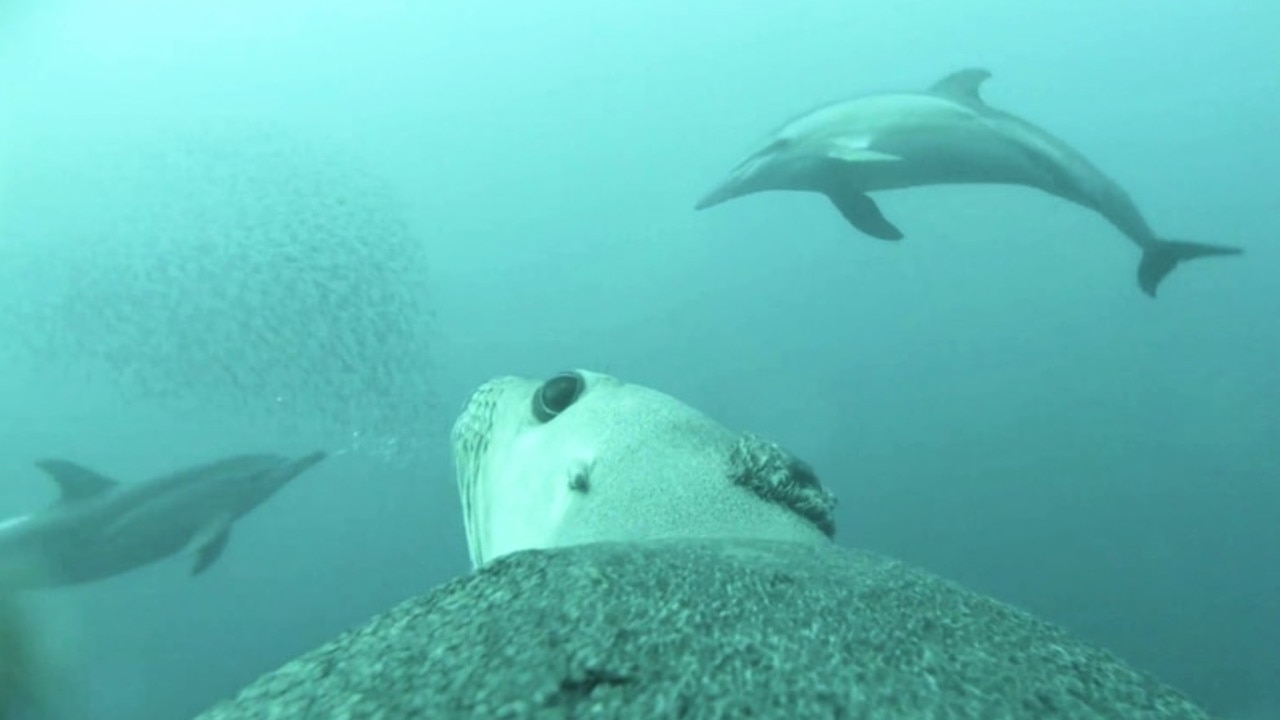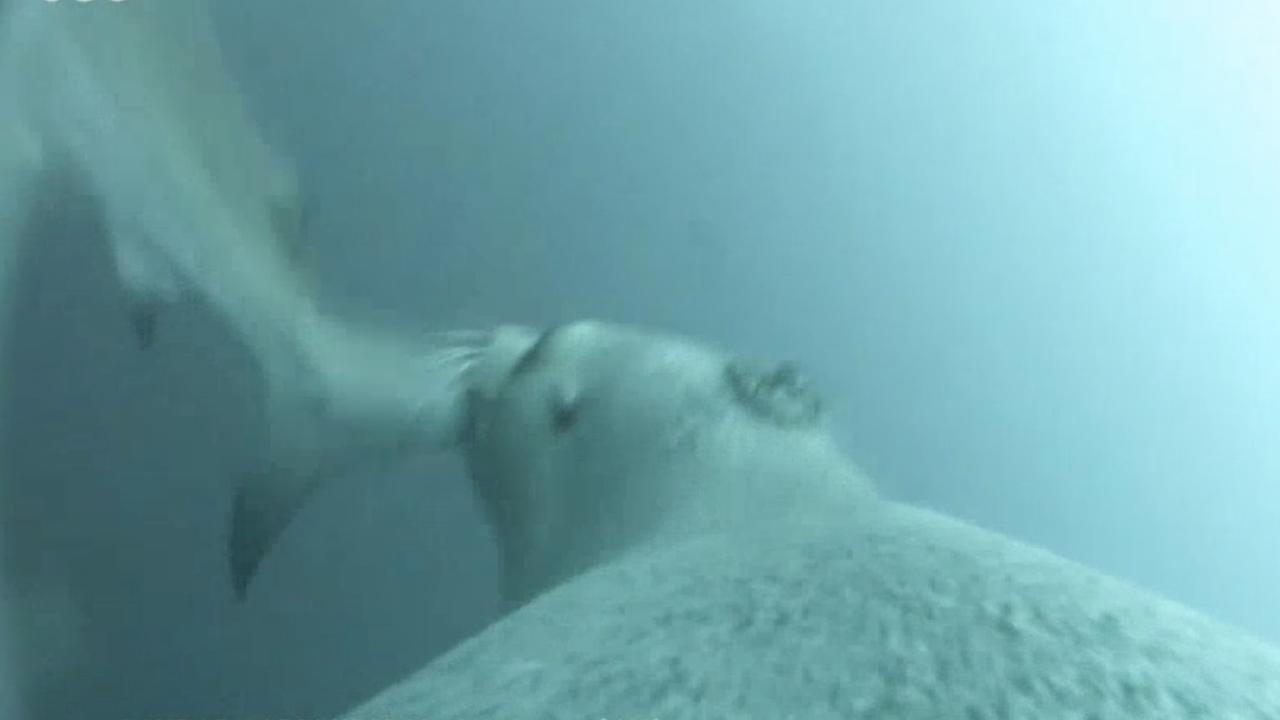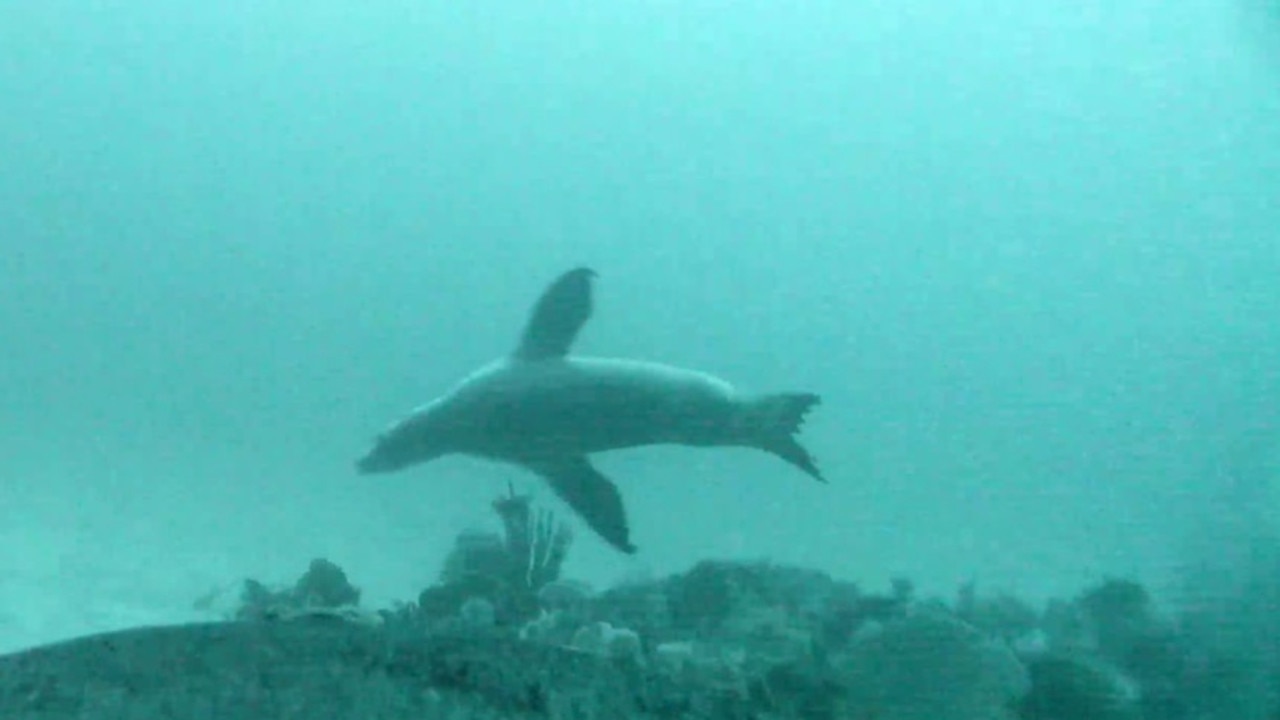Sea lion cam the ‘best live TV you can watch’
Cameras strapped to the backs of Aussie sea lions have been dubbed the “best live TV you can watch”, including clips of one brave seal biting a shark.
An Australian sea lion cam has been dubbed the “best live TV you can watch” as sea lions with cameras strapped to their backs take researchers on a plunge towards the ocean floor.
The project, run by the South Australian Research and Development Institute (SARDI), has made for some extraordinary footage, including clips of sea lions swimming with dolphins, cuttlefish and even sharks.
In one phenomenal video captured by the researchers, a brave sea lion was seen sidling up to a large bronze whaler shark and biting its tail.
“One female cruised through a group of dolphins feeding in the water column and they had a big ball of sardines all balled up and the sea lion just cruises through and you get a great view of that,” SARDI lead Simon Goldsworthy told the ABC.
“There’s some interesting encounters with sharks where the sea lion gave a big bronze whaler a nip on the tail.”

Another sweet video provided world-first footage of an Australian sea lion mum teaching her pup how to forage for food.
“We’ve got amazing footage of a mother and pup exploring under ledges and probing under rocks to find food and one amazing bit of footage where the mother grabs a cuttlefish and the pup gets very excited and she brings that up to the surface where they consume it,” Prof Goldsworthy said.
“So we now have clear evidence that there is a social component to pups learning where to go to hunt and what habitats to feed in, so it’s really opened up our understanding of the amazing ecology of the species.”

The adventurous sea lions are taking researchers underwater for the very first time in a bid for humans to learn more about their feeding and pup-rearing habits.
Prof Goldsworthy said watching the footage was like “being right there with the animal”.
“You’re kind of getting a joy ride on the back of a sea lion, so it’s a bit of a rollercoaster sometimes,” he said.
“They’re zooming very close to the seabed, gliding over the surface. There’s little canyons and caves that the animals are zooming in and out of.
“When you’re travelling over wafting kelp you really feel like you’re right there with the animal. Some of the footage we’ve been getting while they’re down there has been absolutely astounding.”

Prof Goldsworthy said the cameras revealed the diverse habits of Australian sea lions, with some animals choosing to feed in algal reefs and seagrass meadows while others plunged down to feed on deeper reefs or even the bare ocean floor.
“[We’ve seen] animals feeding on little stingrays called stingarees, lots of cuttlefish, octopus, flathead, small sharks — you name it. They’ve got a pretty diverse diet,” he said.
Australian sea lions are the rarest seal species in Australian waters, with 82 per cent of the population found off SA and 18 per cent off WA.
Their numbers have declined by about 60 per cent in the past 40 years. The animals’ population was decimated by sealers and shark fishery gillnets in the past and now faces threats of marine debris, pollution and disease.

Over the course of the project, six Australian sea lions from two SA islands were fitted with cameras to record 12 hours of their lives at sea.
The sea lions were sedated once while the camera was glued to their fur, and again so the camera could be removed once the animal had returned to land a few days later.
The sea lions were at sea for three or four days at a time, during which time they didn’t sleep and ate astounding amounts of food.
Prof Goldsworthy said the small cameras — as well as another device that documented the sea lions’ speed and whether it was travelling up or down or left or right — made for a particularly realistic experience.
“You’re … sitting on the back of the animal, getting an animal’s perspective as it travels across the sea floor,” Prof Goldsworthy said.
“[It records for] 12 hours where we might have several hundred dives.
“It’s the best live TV you could watch. It’s very entertaining.”






